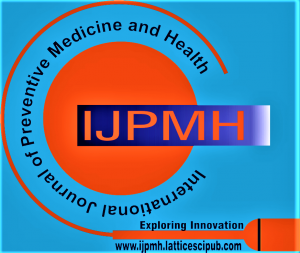![]()
Health Impacts of PM2.5 Exposure on Older Adults (55+) in Bangkok: An Epidemiological Study
Nachanan Jansomboon1, Arisara Klongkan2, Lilli Prateep3, Sascha Prateep4, Pattarapon. Pattarmakarnon5, Patraporn Ekvitayavetchanukul6
1Nachanan Jansomboon, Triam Udom Suksa Pattanakarn School, Pakkred, Nonthaburi, Thailand.
2Arisara Klongkan, Bodindecha (Sing Singhaseni) 4 School, Pakkred, Nonthaburi, ZIP, Postal Code (Optional), Thailand.
3Lilli Prateep, Sarasas Ektra School, Pakkred, Nonthaburi, Thailand.
4Sascha Prateep, Sarasas Ektra School, Pakkred, Nonthaburi, Thailand.
5Pattarapon. Pattarmakarnon, Suankularb wittayalai School, Pakkred, Nonthaburi, Thailand.
6Dr. Patraporn Ekvitayavetchanukul, Patnada-Wellness, Pakkred, Nonthaburi, Thailand.
Manuscript received on 02 June 2025 | First Revised Manuscript received on 10 June 2025 | Second Revised Manuscript received on 17 August 2025 | Manuscript Accepted on 15 September 2025 | Manuscript published on 30 September 2025 | PP: 5-11 | Volume-5 Issue-6 September 2025 | Retrieval Number: 100.1/ijpmh.E110805050725 | DOI: 10.54105/ijpmh.E1108.05060925
Open Access | Ethics and Policies | Cite | Zenodo | OJS | Indexing and Abstracting
© The Authors. Published by Lattice Science Publication (LSP). This is an open access article under the CC-BY-NC-ND license (http://creativecommons.org/licenses/by-nc-nd/4.0/)
Abstract: Background: Air pollution, excellent particulate matter (PM2.5), is a primary environmental and public health concern, with older adults being among the most vulnerable populations due to age-related declines in respiratory and cardiovascular health. Bangkok, a densely populated and traffic-congested city, frequently experiences hazardous PM2.5 levels, raising concerns about its impact on the health of older individuals. Objective: This study examines the correlation between PM2.5 exposure and the prevalence of respiratory and cardiovascular symptoms among older adults (aged 55 and above) in Bangkok. Additionally, it evaluates the effectiveness of protective masks in reducing symptom severity and investigates the role of outdoor exposure in exacerbating pollution-related health conditions. Methods: A two-month observational study (January–February 2025) was conducted among 120 participants aged 55 and above, using real-time PM2.5 data from the GISTDA monitoring system. Health records and self-reported symptom surveys were analyzed across six PM2.5 exposure categories (0–50 µg/m³, 51–75 µg/m³, 76–100 µg/m³, 101–125 µg/m³, 126–150 µg/m³, and >151 µg/m³). Participants were further categorized based on mask usage and outdoor exposure levels to assess protective and risk factors. Statistical analyses included correlation tests and comparative symptom trends. Results: The findings revealed a significant positive correlation between PM2.5 levels and the prevalence of respiratory and cardiovascular symptoms (r > 0.85, p < 0.01). The most frequently reported symptoms were shortness of breath (in 85 cases at PM2.5 levels above 151 µg/m³), persistent cough (in 72 cases), chest tightness (in 65 cases), wheezing (in 48 cases), and eye irritation (in 40 cases). Cardiovascular complications, including elevated blood pressure (50 cases) and heart palpitations (38 cases), were also reported at high pollution levels. Mask usage reduced symptom prevalence by 25–35% across all PM2.5 levels, while participants with high outdoor exposure exhibited nearly double the symptom rate compared to those with limited outdoor activities. Conclusion: PM2.5 exposure is strongly associated with increased respiratory and cardiovascular symptoms in older adults, with outdoor exposure significantly exacerbating health risks and mask usage providing partial protection. The findings underscore the urgent need for targeted public health interventions, including enhanced indoor air quality management, the distribution of protective masks, and advisories to limit outdoor activities during high-pollution periods. Strengthening these measures is crucial to mitigating the adverse health effects of air pollution on the elderly population.
Keywords: PM2.5, Air Pollution, Respiratory Health, Cardiovascular Health, Older Adults, Public Health Policy.
Scope of the Article: Public Health
